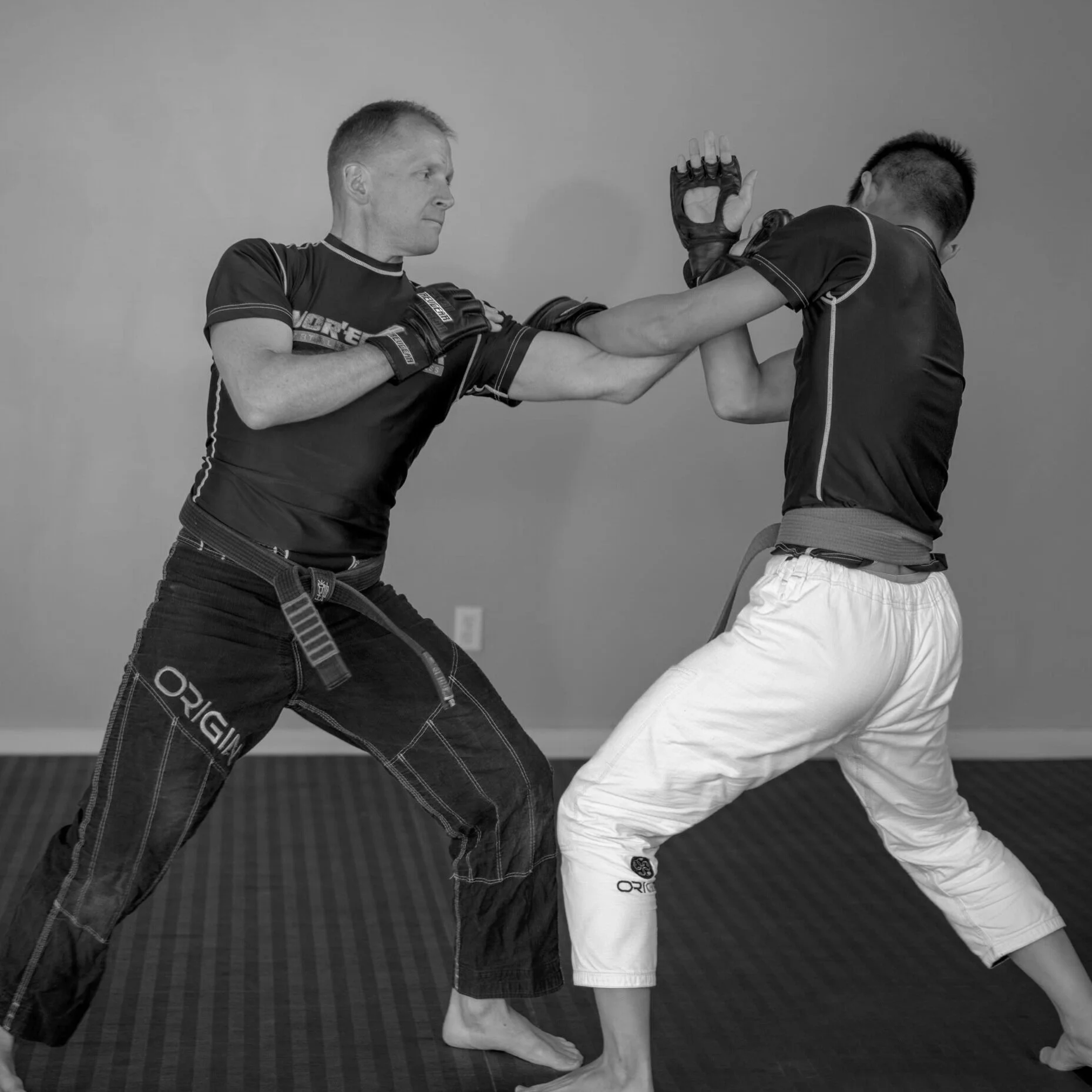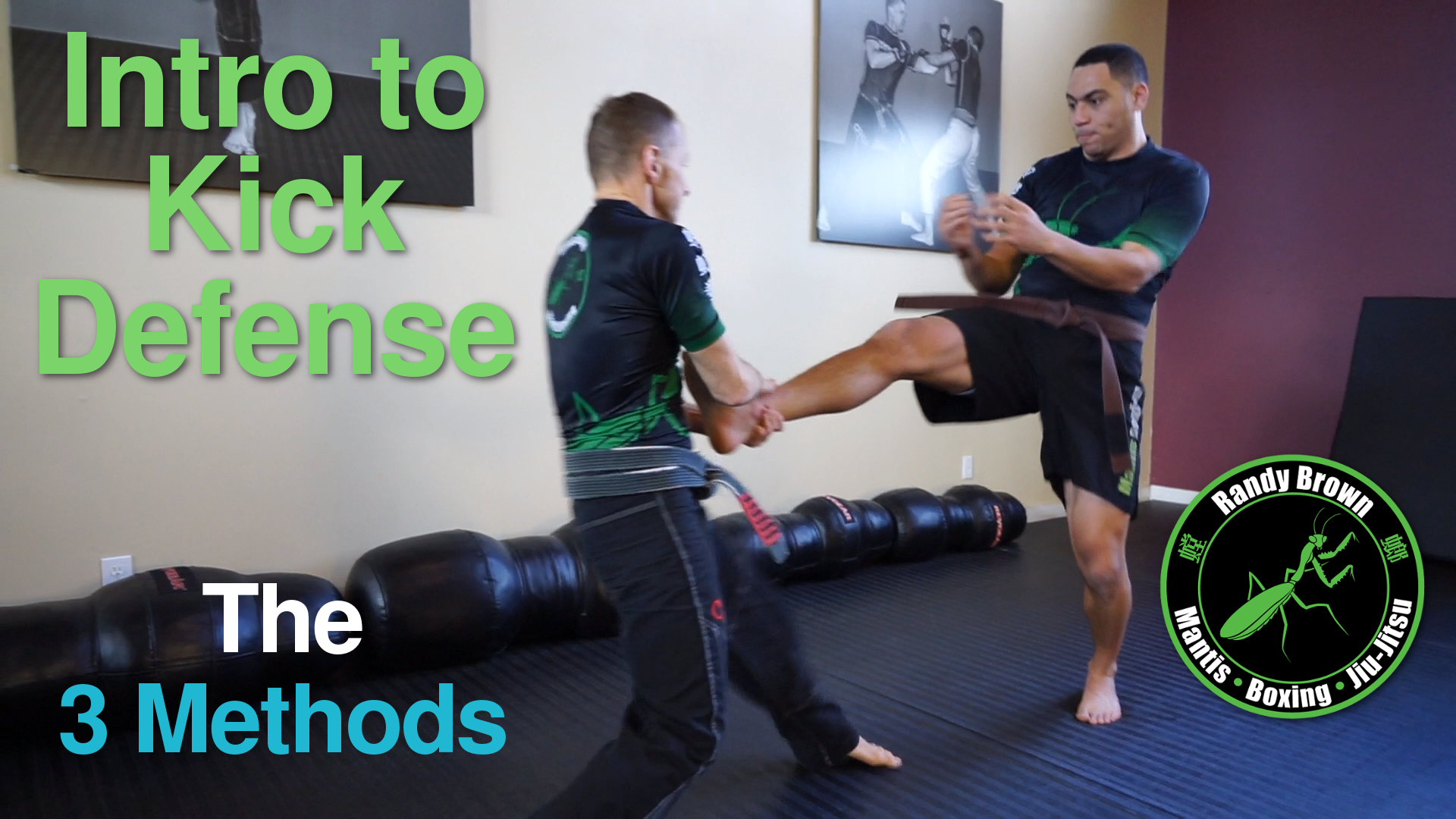Welcome to my course on the 12 Strategies of a Mantis Boxer. These strategies have been passed down through the generations as the bedrock of the style that was born in Shandong province, China in the chaotic and dangerous 1800’s .
“What is a mantis boxer?”
If asked this question, the answer is simple. If you use the following strategies in your fighting to defeat opponents then you are a mantis boxer.
These strategies, along with how they are executed and interpreted are unique to each individual boxer and coach. Some boxers may swap out a strategy and replace it with another that is relevant to them and how they fight. Some have more strategies, and others have less.
Let’s Get Hooked!
We’ll start this course by going through each keyword which includes a video and written explanation of each. At the end I will present some strategies for using the keywords in practice. As with any technique of significant value in boxing, the concepts are simple, the execution is summed up with the following formula: Effort + Work = Success. The concepts and methods are simple, conjoining them together in real time combat is the art!
Hook (Gōu 勾)
Hook (Gōu 勾) - the weapon of the Praying Mantis. It seizes it's opponent with it's large arms and hooks, then pulls it's prey off balance and devours it on the ground. When observing the mantis against a larger foe, one can see the mantis pounce, take the back, use it’s legs to hold on, and continually gain control of it's opponent while it bites and gains better hook positions to attack, and keep it safe.
We don't have large mandibles to chew on our opponents, nor would I advocate biting your enemies unless absolutely necessary. What we do borrow from a mantis' tactics is: controlling, seizing, binding up...the hooks!
The Mantis Hook, hand shape (Xiàng 象) is a key indicator of the style. This seemingly innocuous shape is highly effective and ingenious in it’s design. Other martial arts styles also use hooks: White Crane, Muay Thai, Wrestling (Mongolian and Western), but the Mantis hook places emphasis on the curling of the fingers to strengthen the forearm and the holds.
When a Mantis Boxer latches onto an opponent, the hook has been trained to create a tight clinch. When practicing tào lù (forms/shadow boxing 套路) they emphasize folding the fingers into the hook hand, engaging the muscles in the forearm. Training with this focus, as well as other tools/drills, increases the hook strength in the arms of the Mantis Boxer, giving them more control over their opponent.
How to Hook
One of the most dangerous and often poorly executed phases of a fight is when one fighter attempts to grapple another fighter while that fighter is striking and or kicking them. I call it a zombie attack, as it looks like a zombie with stiff arms attempting to grab a victims neck from too far away.
As you can imagine or have experienced yourself, this can end badly. In the following videos we’ll show an offensive way of ‘earning’ the hooks and clinch using connect and stick to avoid getting punished on the way in, as well as a way to turn your blocks into connecting and sticking your way to the hooking positions you’ll want in order to tie up an aggressor.
Disclaimer: These techniques and methods are on the advanced end of the spectrum. The require proficiency in striking and blocking, as well as an intimate understanding of connect, stick, hook, clinch, hang prior to being able to incorporate them into your boxing.
Offensive Hooking
Defensive Hooking
Hook Takedowns
There are a variety of hook-style takedowns included in mantis boxing. The following is a list of these takedowns and videos depicting them in use.
Clinching Hook (depicted above)
Twisting Hook
Piercing Hook
Hanging Hook
Spinning Hook
Blocking Hook
Rowing Hook
Lifting Hook
Seizing Hook
Leg Hook
Leg Hooks
Leg hooking is a major attack strategy for mantis boxers. The use of the legs as hooks resembling the arms of a praying mantis snatching its prey. The leg hooking heritage hearkens from Chinese, Mongolian, and Manchurian wrestling methods, and was highly prevalent in the common vernacular of Chinese boxing styles at the time of mantis boxing’s inception.
One of the primary reasons wrestlers in China and Mongolia can continue grappling well into their 60’s and 70’s is due to takedowns such as these, versus the common takedowns found in Greco-Roman wrestling such as single and double leg takedowns. While certainly effective, these require far more strength and explosiveness that is difficult to maintain as the body get worn and torn.
While not meant to be an exhaustive encyclopedia of leg hooking techniques, the next video can help lay the groundwork for applying leg hooks.
Clinch (Lǒu 摟)
Clinch (Lǒu 摟) is when we move from kicking and striking, to being tied up in the hooks, body clinch, rear clinch, underhook position, etc. This is where elbows, knees, takedowns take precedence over striking, but also where we are vying for control of our opponent's body and limbs.
The components of grip fighting, neck control, and gaining a positional advantage take precedence over using the fists. "Position before submission". Attaining superior position can lead to the takedown, throw, elbow, or knee, increasing the likelihood of ending the engagement. Managing range is crucial here, and we'll tackle more of that when we get to 'Adhere' (Tie 貼).
Why Clinch?
The clinch precedes the throw/takedown in many cases. Mantis Boxing is designed to strike and kick it’s way in, to affect a throw. Once engaged in the throwing attempt, an opponent may counter, out maneuver, over power, or strike. It is important to increase our grappling skills in order to handle this phase of the engagement.
4 Clinch Attacks to Start
The foll0wing video gives a few starting attacks to work from the clinch that are simpler in execution. This can help lay a foundation and answer the ‘what’s next?’ question after we get to the clinch.
Pluck (Cǎi 採)
Pluck (Cǎi 採) - a short sharp pull down, or powerful snap. We use Cǎi to feed our adversary into a disadvantaged position, or lead them into emptiness. Cǎi initiates from hook or the clinch, and is an integral component to setting up many takedowns, headlocks, chokes, and strikes found in Mantis Boxing.
Originating from the neck hook, double neck hook, wrist, and double arm hook, Cǎi is applied. It is used predominantly in conjunction with Wicked, Hang, Lean, and Clinch. Prominent moves in Mantis Boxing that use pluck are: Mantis Catches Cicada, and White Ape Invites Guest.
When grappling with our adversary, pluck can be initiated to bring the opponent’s weight forward, causing them to suddenly posture up, or resist backwards. At this moment, we can follow them and use applied force in the same direction they are already travelling, taking advantage of their movement and building momentum to affect a takedown or trip.
The same is true in reverse, if I pressure against my opponent, making them feel I am pushing them backwards, they will often resist and pressure back into me. This is a perfect opportunity to apply pluck, again using their energy concurrently with our sharp pull down.
Connect (Zhān 粘)
Connect (Zhān) - connecting with the opponent. The process of ‘trying’ to stick to them. This can be done by grabbing, hooking, finding a way to slow down the limb e.g., a retracting arm, a leg, or by taking advantage of a limb left behind.
Connect can also be accomplished through a strike, or a block. If we strike with a punch, and snap our arm back, we gain the advantage of returning to our guard position and defending counter-strikes, but we may miss out on the connect.
The idea with connect, is finding a way to stick to the opponent so we can close in (Enter (Jìn 進) ) and control the limbs; ultimately getting to a clinch position so we can manifest knees/elbows/trips/takedowns/throws/locks.
Connect translates as ‘to stick’. A good descriptive is if you took a piece of chewed up bubble gum and threw it at a wall, or stuck it to a desk. When it makes contact, that is Zhān. Closely linked to Nián, they appear to mean the same thing, but Nián is sticking rather than ‘to stick’. When you try to pull the gum off the wall afterwards, that’s Nián.
Stick (Nián 黏)
Stick (Nián) - is the act of sticking once we are engaged. Once connected, staying in contact i.e., clinging, sticking, following, allows you to ‘feel’ where your opponent is at all times, and control limbs. Instead of the floating limb being able to bite you.
Sticking/Clinging once we are grappling, is crucial to staying ahead of our opponent.
Connect/Cling is translated as Join/Stick in Tai Ji Quan (Supreme Ultimate Boxing). These principles use the same Chinese Character, and are one in the same in both arts.
Hang (Guà 掛)
Hang (Guà 掛) wears down our opponent, and forces more pressure on them while stabilizing our own position. This saps their strength, and decreases their mobility.
If we use the Mantis Hook on the neck while in the Clinch (Lǒu 摟), but we leave the hook loose, or stand up straight, we have no control over our opponent. By dropping the pelvis (the largest bone in the human body), we use our lowered center of gravity to 'hang' on our opponents neck.
In addition to sapping our opponents strength, we are able to do this with using less strength of our own. Try standing straight up and hooking your partner's neck. In order to pull them downward, or restrict their movement, we would need to use an incredible amount of strength. Now try the same thing and drop your hips while hanging on your partner. Notice the difference in strength usage, and intensity. This makes it much harder for them to move, while using less strength ourselves.
Once we are hanging on our opponent, now we can use Wicked (Diao 刁), Clinch (Lǒu 摟), and Pluck (Cǎi 採) to set up trips, takedowns, and/or strikes.
Wicked (Diāo 刁)
Wicked (Diāo 刁) is the use of deceptive tactics when in battle, and becomes part and parcel to the art we are doing. If we are a Boxer, we'll rely heavily on fakes and feints to expose weaknesses, or create weaknesses in our opponent.
If we are a Grappler, pretending to go for a choke in order to get someone to expose their arm so we can apply an Arm Bar, is another variation of this theme.
Musashi, the famed Samurai of the Book of Five Rings fame, used deception to defeat opponents, or fluster them. It is a common tool of strategy used in any form of warfare to win a battle, skirmish, or fight.
One of the many ways we use this keyword in Mantis Boxing, is a technique that Tàijí Quán calls - "leading the opponent into emptiness".
Using Pluck (Cǎi 採), and Push, Lean (Kao 靠) as well as fakes, and feints, or; setting up a grip, or a throw so we go for something other than what we appear to be doing. Using movements one direction to setup throw or trip in another.
These are all ways of using 'Wicked' deception to get something to work, rather than using strength to force a technique. There is always someone stronger, and even if we're the strongest on the planet, we all get sick, and have bad days. Relaxing and being sensitive to our opponents movements like we discussed with Connect (Zhān 粘) & Cling (Nián 黏), can allow us to read our opponent and trick them into submission.
Enter (Jìn 進)
Enter (Jìn 進) - or advance. This encapsulates a variety of ranges in a fight. Starting from the furthest range to the closest.
Long Range Enter - the first component of enter is crossing the range from outside where there is no fight, to entering within range to the fight itself. In military terms it is similar to a crossing the front line and entering battle. If either side crosses the line then warfare breaks out. We call this line critical distance.
Critical Distance is the invisible line separating us from our opponent’s longest weapon (rear leg attack). Outside of this line, there is no fight. Once we embark over this threshold, we enter a vulnerable stage of the skirmish. In order to successfully cross into enemy territory, we use what are known as ‘bridging tactics’.
Two such examples exist in Mantis Boxing - 3 Section Step, and Circle and Chop. The first, uses angling and position to attack the opponents centerline. This is a highly nuanced technique and requires a great deal of practice. When performed properly, it is extremely difficult to deter.
Circle and Chop, uses a heavy barrage of strikes and advancement with footwork, to overwhelm the opponent and run them down. This is another way to enter and the intent is to run down our opponent.You can learn more about Bridging Tactics in this article. Performing these tactics properly can vastly tip the scales in a fight.
Enter from Striking to Grappling - when we transition from striking to grappling, with the goal of establishing hooks, and a clinch, we must Enter with our feet as well, in order to close the distance. If we reach out to initiate hooks without moving forward, we violate our guard principle and over extend the arms.
This creates ample time, and space, for our opponent to land blows upon us and annihilate our efforts. It can also cause us to lean prematurely and create an opportunity for our opponent to throw us, or drag us down.
When we Enter from Strike we Connect, Stick. Then, and only then, do we attempt to hook if the opening is secure. If we lose position, or our opponent retreats, we can switch gears again and keep a solid advantage.Enter with Connect Stick Adhere - Entering the grappling phase of the battle when we connect and stick, we need to commit fully to engaging the single, or double underhooks and go forth completely to adhere. Failure to advance in this stage of the encounter, can lead to our own demise.
As we enter the flank position with a single underhook across the back, our opponent can capture our arm for a joint lock with Mantis Captures Prey. If we fail to enter with the double underhooks, and do not adhere to them, they can still rain punches, elbows and knees upon us with the available space left betwixt.Enter the Barricade - simply put, run them down. If our opponent doesn’t move, we continue to advance. How we Enter is what matters. We need to change gears on the way in. Kicks turn to Strikes. Strikes become Elbows and Knees. Connect and Cling become Hook and Clinch. These metamorphosis into Takedowns, Trips, Throws.
Enter upon Retreat - if our opponent retreats and creates space, rather than let them establish distance and regain their guard, or position; we enter/advance to follow. We enter with a kick, or strike until we can adhere once more.
Crush (Bēng 崩)
Crush (Bēng 崩) - to ‘collapse and fall into ruin’. Also known as 'crushing' in many Chinese Martial Arts usages. Bēng is used to attack the vital targets in the midsection of an opponent. Effective strike targets such as: the liver, stomach; ribs, and the real treasure - the solar plexus, or central palace in Tàijí Quán. All of these targets can disable an opponent with one hit. This is seen in countless boxing matches, UFC battles, Muay Thai fights, and Kickboxing bouts. What happens when you land a good strike on an opponent in one of these locations? They "collapse and fall into ruin".
Bēng, as a principle, can use a fist, a knee, a kick, all to accomplish the goal of - causing the opponent to - 'collapse, and fall into ruin'.
Aligning the Strike
If you examine the height of many of the stances found in Chinese Martial Arts forms, and in this case Bēng Bù, you'll see that the strike does not align with the opponent's face but rather with the solar plexus/lower rib region of a ‘standing’ opponent.
Dropping the stance aligns the punch to the effective strike targets (liver, stomach, solar plexus). Mantis Boxing uses the Horse-Riding Step (Mǎ Bù 吗步), Bow Step (Gōng Bù 弓步) to accomplish this alignment of the attack.
Punching to the face is certainly an effective attack, but it also hurts the striker if they aren't wrapping their hands, or wearing gloves. Styles of Karate have Makiwara boards, and Chinese Martial Arts has Iron Palm/Iron Fist to train the hands so as not to break/injure the bones while connecting with someone's hard skull.
Iron Fist training takes months/years to train. Conditioning the bones and skin is only accomplished through extreme dedication and commitment. It is faster to teach someone a technique to strike the vitals, meanwhile working on conditioning the hands for longer term strategies.
Keeping in mind: the human skull has evolved over millions of years to protect the brain inside of it. It's hard, and not meant to crumble at the first hint of danger. Quoting a bike-helmet study published in the Journal of Neurosurgery: Pediatrics, "235 kg (520 pounds) or 2,300 newtons of force would be needed to crush a human skull, almost twice as much force as human hands could possibly muster."
Plainly speaking, anyone who has punched another human in the skull with a bare hand can tell you - it hurts when you hit. Knowing this, it is easy to see why a striking principle like Bēng, is so prevalent in the martial arts.
One might be better served destroying an enemy in a soft target, rather than risk the injury of straight on face punching. This can be seen in other Mantis Boxing techniques aimed at the head region using alternate hand shapes: White Snake Spits Tongue, Spear Hand, Thrust Palm, Ear Claw.
Catastrophic Collapse
One of the 4 Pillars of Mantis Boxing is - throwing, tripping, and takedowns (Shuai 摔). With over 20 plus techniques in our arsenal from the four major grappling positions, our objective as a mantis boxer is to topple an adversary to the ground once we gain the hooks and clinch. This a significant execution of the Bēng strategy as a whole.
To be continued…
Strike (Dǎ 打)
Strike (Dǎ 打) - at it’s root, Mantis Boxing is a style of stand-up grappling. However, we need tools to get to the clinch and then throw; especially against an active and violent opponent. The style includes strikes and kicks to either knock out the opponent, or Enter (Jìn 進) to a grappling position in order to facilitate a throw/trip/takedown.
Strike is good keyword to remember when we are engaged in grappling against another high level grappler. At times, we can forget that a strike is available, succumbing to the common myopic infirmity of ‘Target Fixation’.
3 Methods of Strike
Strike to Damage
Softening the opponent with any one of, or combination of the strikes found in Mantis Boxing. These include fist strikes such as: Crushing Fist, Cannon Fist, Drilling Fist (uppercut), Scraping Fist, and Chopping Fist. Other options are Open-Hand Strikes which include: Thrust Palm, Eye Plunder, Ear Claw, Throat Claw, Spear Hand, Slant Chop, and Groin Slap.
Strike to Enter/Bridge/Connect
A basic bridging tactic for crossing Critical Distance is to strike on the way in. This occupies our opponent while we enter, rather than walking in and eating a punch. In order to successfully cross into enemy territory, we use ‘bridging tactics’.
A bridging tactic is a tool or method to occupy or distract our opponent in order to bridge the gap from out of range, to where we can land our attacks. There are a variety of methods in Mantis Boxing to achieve this, such a 3 section step, and double kick, but a rudimentary and base level bridging tactic is to strike upon entry.
Strike to Connect, to Stick, to Hook, then Clinch
Within striking range we decide to reach out and try to grapple our foe by getting our hooks on their neck/arms. This gives our opponent an opportunity to strike us, as they are no longer occupied.
By striking first, we engage our opponent’s limbs if/when they defend, and then transition from connect to stick. Upon sticking, we begin to hook, and then clinch. This provides a staged execution of reaching the clinch using strike, instead of being knocked out in our attempt.
The Strikes of Mantis Boxing
Open Hand Strikes
Palm strikes are used for attacking the head. This limits the damage done to the hand and allows for full power striking.
Thrust
Hook
Shovel
5 Fist Strikes
Fists are used for softer targets like the body, but a few are used for the head/neck region.
Chopping Fist
Straight Fist - Crushing/Cannon
Drilling Fist
Scraping Fist
Circle Fist
Finger Strikes
Finger strikes are used for precision striking only. These are vital targets that can quickly and efficiently dispatch an opponent.
White Snake Spits Tongue - Eyes
Piercing Palm - Throat
Ear Claw - Ear
Elbow Strikes
Elbow strikes are used inside the clinch. When fists and palms create too large of an opening in our defensive guard to implement them safely. Elbows are highly destructive.
Inside Elbow
Outside Elbow
Upper Elbow
Downward Elbow
Falling Elbow
Thrusting Elbow
Smashing Elbow
Knee Strikes
Knee strikes, as with elbows, are predominantly used inside the clinch. The exception being the skipping knee. Knees are powerful tools and create destructive damage upon impact.
Crushing Knee
Wicked Knee
Side Knee
Skipping Knee
For more instruction on the strikes of mantis boxing, you can access: The Strikes of Mantis Boxing course in the online member area. The course is also available as a stand-alone option in the storefront.
Adhere (Tiē 貼)
Adhere (Tiē 貼) - space management. Creating space when on the defense, and removing space from our opponent when on the offensive. If you want to reduce the level of control an enemy has on you - framing them, slipping the hooks, and increasing distance can help keep you from getting toppled.
On the inverse, when attacking the opponent, removing their space allows for greater control and openings for the takedown. Managing range becomes a crucial element in a fight. One of the most important.
If someone stretches back increasing space, and we’re still trying to keep our hooks in, we can get destroyed as we allowed openings and space for strikes. We have to change gears and switch back to striking, or even kicking if the range increases too much. If an opponent pushes off, or backs up, we follow them to stay adhered.
Position before submission
It’s important to recognize the saying - “position before submission”. We do not want to become so focused on striking, that we give up our position in the process. Being methodical, and taking attacks of opportunity, rather than trying to force the strike, allows for us to have a higher probability of staying dominant vs. defensive.
When adhering to our adversary, we should secure our position first before attempting to strike. Throwing a punch, elbow, knee, or applying a takedown, or throw without proper position first, will surely end in our own demise.
Lean (Kào 靠)
Lean (Kào 靠) - to lean against one’s opponent. Due to the heavy reliance upon grappling and clinchwork in Mantis Boxing, Kào is an important keyword when engaged close range with the enemy.
Postural Defense
Once we are entangled in the Clinch (Lǒu 摟), we lean in to protect our position, or risk being taken down, or pushed over. We use our foe as a support structure, leaning against them whilst engaged in grappling and clinchwork. This is synchronous with Adhere (Tiē 貼).
While we Adhere, we shore up our position by using Kào. If this becomes impossible, we should break range and secure a better position. Kào can shut down my opponent’s attempt at hip toss throws; dropping my CG making it difficult for him/her to get their hips (fulcrum) under my CG.
It also reduces chances for them using Crashing Tide; their posture would become compromised simply upon attempt. Another advantage provided by Kào, is buffering the double leg takedown. If we’re upright, our legs are within easy grasp, and shortens the time until their shoot. By leaning, I can sprawl easier and faster by dropping my CG and putting my weight down upon their shoulders.
Overall, if we can stay inside the clinch with a solid posture, and forward lean, we can use this pressure to time takedowns with applied force.
Applied Force
In addition to securing our position with solid posture, we can also use the shoulder to assist in our own throws. The shoulder is used heavily in a lean forward type motion to affect applied force. This assists in the execution of many takedowns such as Crashing Tide, Single and Double Leg Takedowns, Point at Star, Reaping Leg, Blue Heron Spreads Wings, and more.
Strategies
Here a few examples of using the keywords strategically to be more effective at combat:
Striking to Grappling
Wicked Enter to Bridge
Bridge to Strike
Strike to Connect & Stick
GRAPPLE
Stick and Connect to Hook
Hook to Clinch then Clinch to Hang
Enter to Adhere
Adhere leads to Lean
Lean leads to Crush
Knees
Hook to Pluck to Crush (knee strike)
Wicked Games
Pluck followed by Adhere & Lean to Hook (legs)
Lean followed by Pluck to Seal (choke)
Grapple to Strike
Hook, Clinch and Lean. Opponent breaks clinch. Return to Strike.

























